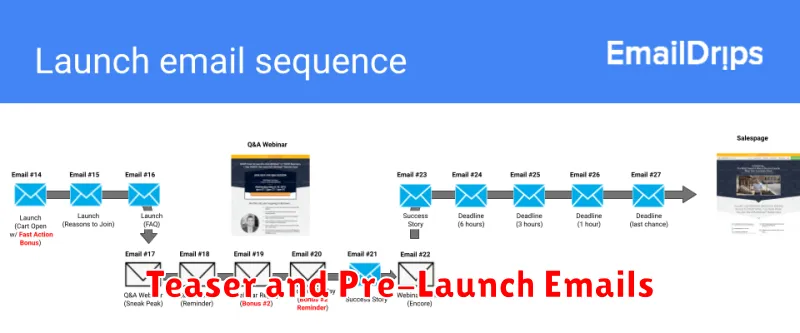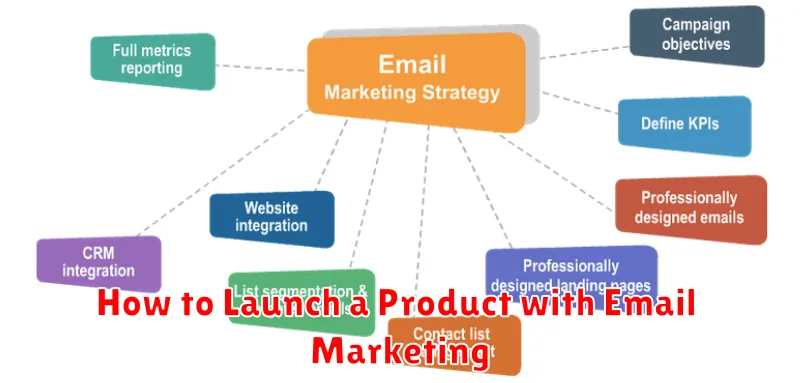Email marketing remains a powerful tool for product launches, offering a direct line to a highly engaged audience. Successfully launching a product requires careful planning and execution, and email marketing can play a pivotal role in generating buzz, driving pre-orders, and ultimately, boosting sales. This article will guide you through the essential steps of leveraging email marketing to maximize the impact of your product launch, covering everything from segmenting your audience to crafting compelling email campaigns that convert.
From building anticipation through pre-launch email sequences to announcing the product with a dedicated launch email blast and following up with post-launch engagement emails, a well-structured email marketing strategy can be the key to a successful product launch. Learn how to craft compelling email copy, optimize your emails for conversions, and analyze your results to refine your approach. Discover how to effectively utilize email marketing to create a successful product launch and achieve your business objectives.
Planning Your Launch Sequence
A well-planned launch sequence is crucial for a successful product launch. It ensures consistent communication and builds excitement leading up to the big day.
Start by defining your launch date. This anchor point informs all subsequent scheduling.
Then, outline the key messages you want to convey at each stage. Consider highlighting different product features, benefits, or early bird offers.
Next, determine the frequency of your emails. Too many can overwhelm your audience, while too few can result in lost momentum. A good starting point is one email per week, increasing to two or three as you approach the launch date.
Finally, map out your timeline. A simple spreadsheet can help visualize the sequence and ensure all elements are aligned.
Building a Launch Email List
Building a robust email list is crucial for a successful product launch. This list becomes your direct line of communication to a highly engaged audience interested in your product. Start early. Don’t wait until the last minute to begin collecting email addresses.
Employ several strategies to grow your list. Offer a lead magnet, such as a free ebook, checklist, or exclusive content, in exchange for email sign-ups. Embed sign-up forms strategically throughout your website. Use pop-up forms, but ensure they’re not intrusive to the user experience. Promote your email list across your social media platforms.
Consider running contests or giveaways to incentivize sign-ups. Partner with complementary businesses to cross-promote your email lists and reach a wider audience. Always ensure compliance with data privacy regulations and clearly state how you will use subscribers’ email addresses.
Teaser and Pre-Launch Emails

Before the official product launch, leverage teaser and pre-launch emails to generate excitement and anticipation. These emails offer a sneak peek, highlighting key features and benefits without revealing everything.
Focus on building anticipation. Use compelling subject lines and visuals to pique interest. A countdown timer can create a sense of urgency.
Segment your audience. Tailor your pre-launch emails to different segments of your audience, highlighting the specific benefits that resonate with each group.
Offer exclusive pre-order options or early bird discounts. Reward your loyal subscribers with exclusive access and incentives.
Using Scarcity and Urgency
Scarcity and urgency are powerful psychological triggers that can significantly boost your product launch. By implementing these tactics strategically in your email marketing, you can encourage immediate action and drive sales.
Scarcity focuses on limiting the availability of your product. This can be achieved through limited quantities, exclusive offers for email subscribers, or time-limited access to a specific product version. Clearly communicate the limited nature of the offer to emphasize its value.
Urgency, on the other hand, emphasizes the time-sensitive nature of the offer. Setting deadlines for purchasing, offering early bird discounts, or promoting limited-time bonuses can create a sense of urgency, motivating customers to purchase before the opportunity expires.
Combining both scarcity and urgency can yield even better results. For instance, you might offer a limited-time discount for the first 100 customers. This approach appeals to both the fear of missing out (FOMO) and the desire for a good deal, resulting in a higher conversion rate.
Post-Launch Follow-Up
The product launch doesn’t end when your product goes live. Post-launch follow-up is crucial for building customer relationships and driving further sales.
Thank customers for their purchase. A simple thank you email can go a long way in fostering goodwill. Consider including helpful resources like tutorials or FAQs in this initial follow-up.
Gather feedback. Request reviews and testimonials. Understanding the customer experience helps refine your product and marketing strategies. Use surveys or direct email requests to collect valuable feedback. Address any negative feedback promptly and professionally.
Promote related products or services. Once a customer has made a purchase, they are more likely to buy again. Offer personalized recommendations based on their initial purchase. This is a great opportunity to upsell or cross-sell.
Tracking Open and Click Rates
Monitoring open and click rates is crucial for understanding your email campaign’s performance. These metrics provide valuable insights into how your audience interacts with your product launch emails.
Open rates reveal how many recipients opened your email. A low open rate might indicate issues with your subject line or sender information. Experiment with different subject lines to improve open rates. Consider A/B testing different options to identify the most effective approach.
Click-through rates (CTRs) show how many recipients clicked on a link within your email. A low CTR might suggest that your email content isn’t engaging or that your call-to-action isn’t clear enough. Ensure your call to action is prominent and encourages recipients to take the desired next step.
Tracking these metrics allows you to optimize your email strategy throughout your product launch. Identify what works best and refine your approach for subsequent email campaigns.

